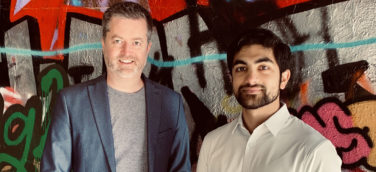Social media communication has become a crucial part of today’s healthcare continuum, and can be immensely helpful to healthcare/pharma brands if used in the right way. Let’s get back to social media fundamentals. The first step in that conversation is creating valuable content. What does valuable content look like? What should be discussed? Who should be involved in the conversation? Tweeters, many of whom are healthcare providers, shared interesting thoughts on this topic in a March 3rd Healthcare Social Media (#hcsm) tweet chat.
Q1: With limited nature of relationships due to HIPAA, what content is valuable for healthcare (HC) orgs using social media (SM)?
@joshdbrett (Joshua Brett, Independent Healthcare Communication Professional)
T1 Most valuable #hcsm content is information that helps people better understand their health. Be a source of help for your audience.
@Saif_Abed (Saif Abed, MD, #DigitalHealth Startup & VC/M&A Advisor @AbedGraham Healthcare Strategies Ltd)
T1 – Patient relationships go beyond the clinic walls. HCSM content represents that continuum of care. #HCSM
@ChrisGallowayMD (Chris Galloway, MD, @DaVitaResearch Medical Director and ER physician)
T1 – latest guidelines for different therapies, protocols. New medicines. New medication alerts #hcsm
@crgonzalez (Carmen Gonzales, Innovator, Citizen At Large, Clinical Trial Patient Enrollment Strategist)
T1: Helping patients/caregivers navigate online resources and medical research archives is a big help for pts., never mind the brand #hcsm
@RichmondDoc (Mark Ryan, M.D.)
T1 Companies that create content to advertise/push brand will be missing the point. Find out what pts need, provide *that* content. #hcsm
@gczark (Gina Czark, Strategic Communicator & Head of #SoMe @ NewYork-Presbyterian Hospital)
T1: being a true resource for patients & offering them educational content, not generic promotional msgs. #hcsm
@crgonzalez
T1: In particular, making sense of where disease research is at, and what is on the horizon is helpful for patients #hcsm
@meganranney (Megan Ranney, MD, Emergency Physician)
T1: SM can provide guidance & FAQs re: common conditions, dxs, meds, procedures…& can “brand” a group’s greatest successes/research #hcsm
@andydarnell (Andy Darnell, Marketing Manager)
#hcsm – Testimonials, patient stories. Video. Get the doctor and patient to combine to tell the story.
@RichmondDoc
T1 There is also a tendency to assume you know what people/patients need. Don’t assume. Ask, listen, respond, and then act. #hcsm
@Saif_Abed
T1 – SoMe must be transparent, accessible and accountable in its content. Human relationships are still central to healthcare after all. #HCSM
@EndoGoddess (Jen Dyer MD, MPH)
T1: Good multimedia storytelling = good content. #hcsm
@Richmond Doc
T1 Think mobile, think websites vs. podcasts/videos, think point-of-care quick tools vs. in-depth resources: connect in various ways. #hcsm
@drpauldempsey (Paul Dempsey, MD, Pediatrician, Medical Director of @quintepediatric; Assistant Professor, Queen’s University)
T1: start with “what things are we asked about most often” as content foundation #hcsm
@Cascadia (Sherry Reynolds, Patient Centered Design Evangelist)
T1 your audience isn’t one size fits all. – go to where they are – different SoME for Millenials vs. Baby Boomers vs GenX #HCSM
@Saif_Abed
T1 – SoMe has to generate data —>information—>knowledge. Patient & Dr led to add value and be brand enhancing. #HCSM
There is an overwhelming consensus particularly among the physicians in the group that healthcare organizations using social media must focus on the patient, be interactive and be genuinely helpful to them. Some ideas of valuable content include: new medications, medical research, online resource navigation, educational content, testimonials, patient stories, mobile, websites versus podcasts/videos, point-of-care quick tools versus in-depth resources, FAQs, relevant content for all audience groups, and patient and doctor led content and storytelling.
Social media communication is successful when there is appropriate engagement of your audience. Doctors’ participation is particularly important in the social media information exchange.
The tweet chat’s second topic asked how healthcare social media may be evolving the traditional provider/patient relationship.
Q2: How does social media affect the traditional provider/pt relationship? Is it possible for pts to recruit a doc using social media?
@joshdbrett
T2 #hcsm makes the provider-pt relationship more of a 2-way street. Patient arrives at provider armed with more info to make smarter choices.
@drpauldempsey
T2: SM is another tool some patients use to screen HCPs #hcsm
@RichmondDoc
T2 SoMe can affect the Dr/Pt relationship by leveling the playing field, allowing info to flow more evenly between docs/pts.
@RichmondDoc
T2 And, I suppose that there are pts who will choose docs based on SoMe action/presence/use. But I wonder how many are doing that? #hcsm
@Saif_Abed
T2 – The Dr-Pt relationship is a continuum of care and not discreet events. SoMe can facilitate and enhance that process. #HCSM
@ChrisGallowayMD
More pt education with physician approved SM could help pts to ask the right questions about their diagnosis, disease, therapies…#hcsm
@AfternoonNapper (#hcsm Consultant, Public Speaker, Founder @FMDChat, Stanford #MedX adviser, #ePatient)
Re: pts choosing docs b/c of SoMe – SoMe has VERY wide reach, many pts who read & are helped by content, not able to SEE doc personally #hcsm
@ekeeleymoore (Erin Moore, Cystic Fibrosis Advocate)
T2: Some patients are coming in a lot more informed which can challenge providers, create new learnings for all parties #hcsm
@Saif_Abed
T2 – SoMe isn’t about replacing Drs. It’s about increasing the trust between Drs & Pts. Keep us talking. #HCSM
@Saif_Abed
T2: SoMe, with the right clinical & commercial models, can build a greater health community, understanding & rapport. #HCSM
@drflanders (Daniel Flanders, MD)
T2 #SoMe can allow opportunity 4 patients to “get to know” prospective MD before formally engaging in a patient/MD relationship #hcsm
@AndrewLenis (Urology Medical Student @CWRU)
T2: we’re now providers to a web of pts who use SM, therefore the physician-patient relationship extends outside the office & hospital #hcsm
Is a new trend developing in which patients are choosing doctors based on their social media engagement? Perhaps. But the fundamental idea is that interaction outside of the doctor’s office can lead to enhanced communication in the doctor’s office. One thing’s for sure: helping the patient is much more important than helping your brand. Learning how to continue the patient/doctor conversation beyond office walls and understanding how to use social media to get patients asking informed questions about their condition can ultimately enhance both doctor-patient communication—and your brand.






